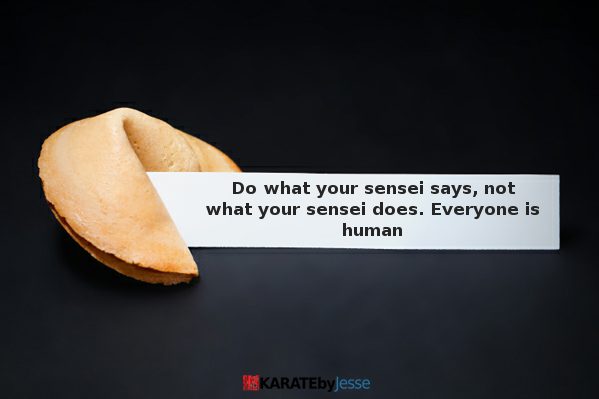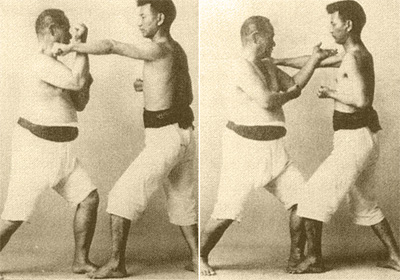Imagine a big jar filled with honey.
Sweet, sticky, thick honey… Stop drooling, it’s only a thought experiment!
Okay, now imagine a person trapped inside the jar. Yes, it’s a life size jar, filled with honey.
And it’s a man trapped inside. Yes you read right.
That man is going to punch his way out. He chambers… then slowly starts twisting his hips, using his whole body to generate power… slowly, slowly, his fist is travelling forward…then boom! The jar shatters. He punched his way out of the jar.
This is the Okinawan style of generating power – “Muchimi”.
Muchimi is a heavy, sticky, feeling.
You will not find it in the Japanese dictionary though.
It is a unique authentic Okinawan word – Describing a native Okinawan concept of transferring power. The word actually comes from the word mochi, which is a sticky rice cake (as seen in the picture). They’re quite delicious…
Muchimi is kind of like punching in honey. You slowly start… by generating power with your feet, then legs, hips, up along the spine, through your latissimus dorsi and then explode fast out through the arms, releasing all of the power you have been winding up.
This is the old way of doing waza (techniques) in Okinawa.
Muchimi is used for all techniques: Punches, kicks, strikes, you name it. And if you have ever seen old style Okinawan Karate, then you will know what muchimi is, even if nobody has told you that it is called muchimi. You recognize it immediately.
Because it is different from Japanese Karate.
The Japanese style is to be completely still, and then suddenly explode out, from 0% to 100% in the shortest time possible. Compared to that, you could say muchimi is a more “flowing” way of power, not relying on muscle power. Muchimi is relaxation.
Think of words like heavy, sticky, thick, pasty.
I think doughy is good too.
You really have to see somebody use muchimi style techniques, then I guarantee that you will understand it. It’s like the whole body is a giant whip.
Quite impressive, if done by the right person.
But there is another side of the coin.
Since muchimi refers to being sticky and heavy, you use it in close range grappling too – when you don’t want to lose contact with the opponent. This is an important concept in for example Ju-Jutsu, Wrestling or MMA.
They don’t call it muchimi, of course, that’s only in Okinawa. They call it “leave no gaps” or “no empty spaces”, or “no air”. The goal is the same though: Economy of Movement, and Maintaining Control.
If you don’t stick to the opponent, you are not in control. Either you are close, or far away. Those are the only two options. In between those two, you don’t have control. So when you are close, be sure to stick.
Like a rice cake.
—–
That was a brief description of muchimi. As you can see, the priniple of muchimi has two uses: Muchimi is both the heavy/sticky feeling when starting a long range technique, and also the concept of stickiness/heaviness in close combat.
Quite practical.
Is muchimi still being used today? Yes it is.
But I think it is divided: The muchimi style of punches/strikes/kicks etc. is mostly used in Shorin-ryu schools nowadays, while the close quarter grappling version is mostly used in Goju-ryu (kakie). With some exceptions.
The ultimate goal is to be able to use it in any situation, of course.
Muchimi – The Okinawan way of power.
Remember the word.



13 Comments